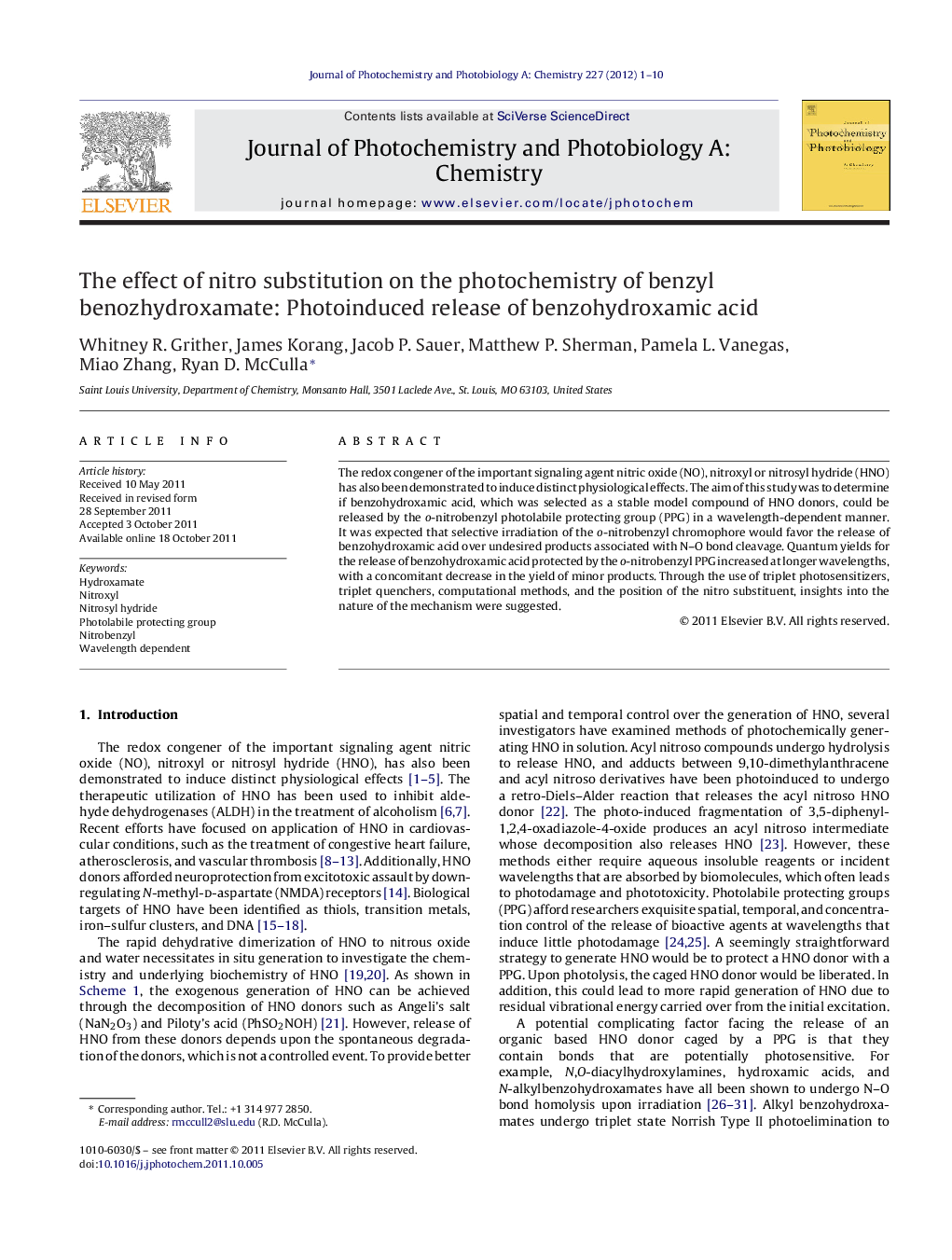| Article ID | Journal | Published Year | Pages | File Type |
|---|---|---|---|---|
| 27190 | Journal of Photochemistry and Photobiology A: Chemistry | 2012 | 10 Pages |
The redox congener of the important signaling agent nitric oxide (NO), nitroxyl or nitrosyl hydride (HNO) has also been demonstrated to induce distinct physiological effects. The aim of this study was to determine if benzohydroxamic acid, which was selected as a stable model compound of HNO donors, could be released by the o-nitrobenzyl photolabile protecting group (PPG) in a wavelength-dependent manner. It was expected that selective irradiation of the o-nitrobenzyl chromophore would favor the release of benzohydroxamic acid over undesired products associated with N–O bond cleavage. Quantum yields for the release of benzohydroxamic acid protected by the o-nitrobenzyl PPG increased at longer wavelengths, with a concomitant decrease in the yield of minor products. Through the use of triplet photosensitizers, triplet quenchers, computational methods, and the position of the nitro substituent, insights into the nature of the mechanism were suggested.
► The o-nitrobenzyl photolabile protecting group released benzohydroxamic acid. ► Longer wavelengths favored release over N–O bond cleavage. ► Shorter wavelengths favor N–O bond cleavage products via triplet. ► Position of nitro substituent has dramatic effect on observed photochemistry. ► Results indicated HNO donors could be released by photolabile groups.
